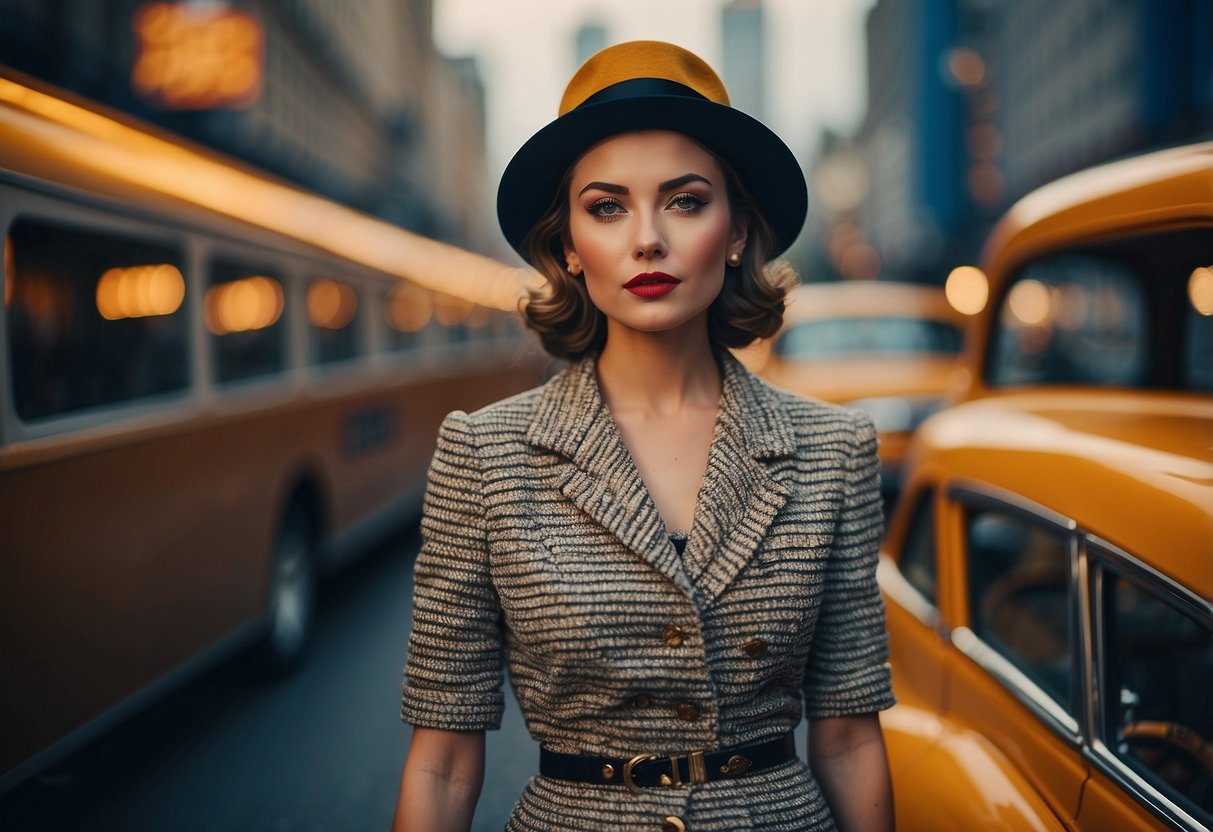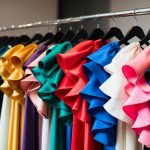
Mixing Eras: Do’s and Don’ts
Combining different fashion eras requires a keen eye for detail. Success lies in balancing proportions, coordinating colors thoughtfully, and choosing the right accessories to bridge the gap between vintage and modern styles.
Balancing Proportions
Mixing pieces from different eras often involves playing with varying silhouettes. High-waisted vintage skirts can pair well with modern fitted tops.
Avoid overwhelming the outfit by wearing oversized vintage jackets with oversized modern pieces. Instead, contrast a loose vintage blouse with slim-cut pants for a balanced look.
Proper proportioning creates harmony, making the ensemble look intentional rather than haphazard. Choosing a focal point and building around it helps to keep the look cohesive and well-proportioned.
Color Coordination
When mixing eras, color coordination can make or break an outfit. Retro pieces often feature bold patterns and hues. It’s essential to choose modern items that either complement or subtly contrast these colors.
Neutral modern pieces can ground a vibrant vintage item. For a seamless look, match vintage accessories to one of the colors in a patterned piece.
Careful color coordination avoids clashes and creates a visually appealing look. Combining eras thoughtfully through color opens up numerous stylish possibilities without appearing mismatched.
Accessorizing Vintage Pieces
Accessories play a pivotal role in marrying vintage and modern elements. Vintage jewelry can elevate a contemporary outfit, adding a touch of classic elegance.
To keep the look current, avoid going overboard with retro accessories. A statement vintage handbag or a piece of jewelry is often enough. Modern accessories can also tone down an otherwise overwhelmingly vintage outfit.
Choosing the right accessories ensures that vintage pieces enhance rather than overpower a modern look. Balancing nostalgic items with contemporary ones can create a fresh, stylish appearance.
Caring for Vintage Fashion Items
Proper storage is essential for preserving vintage clothes. They should be stored in a cool, dry place away from direct sunlight. Using padded hangers for delicate pieces can prevent stretching and damage. For knits and heavy fabrics, folding and placing them in breathable garment bags is advised.
Cleaning vintage fashion requires gentle handling. It is important to avoid harsh detergents and opt for mild, non-toxic options. Hand washing is often recommended, but if using a machine, ensure it’s on the gentlest cycle possible. Always air dry vintage items and avoid tumble drying.
Avoid frequent laundering of vintage clothes. Over-cleaning can cause wear and tear on the fabric. Spot cleaning can be an effective way to maintain cleanliness without causing too much stress on the garment.
Repairs should be made with care to maintain the garment’s integrity. Seeking professional restoration services for significant repairs can be beneficial. Small repairs like sewing loose buttons or patching small tears can be done at home with a steady hand.
Checking for pests is crucial as moths and other insects can cause significant damage. Using cedar blocks or lavender sachets in storage areas can help deter these pests naturally. Regularly inspecting garments for signs of damage can also prevent further deterioration.
Lastly, always handle vintage pieces with clean hands. Oils and dirt from hands can transfer to the fabric and cause stains or damage over time. Treating vintage fashion with the respect it deserves will ensure its longevity for future enjoyment.



